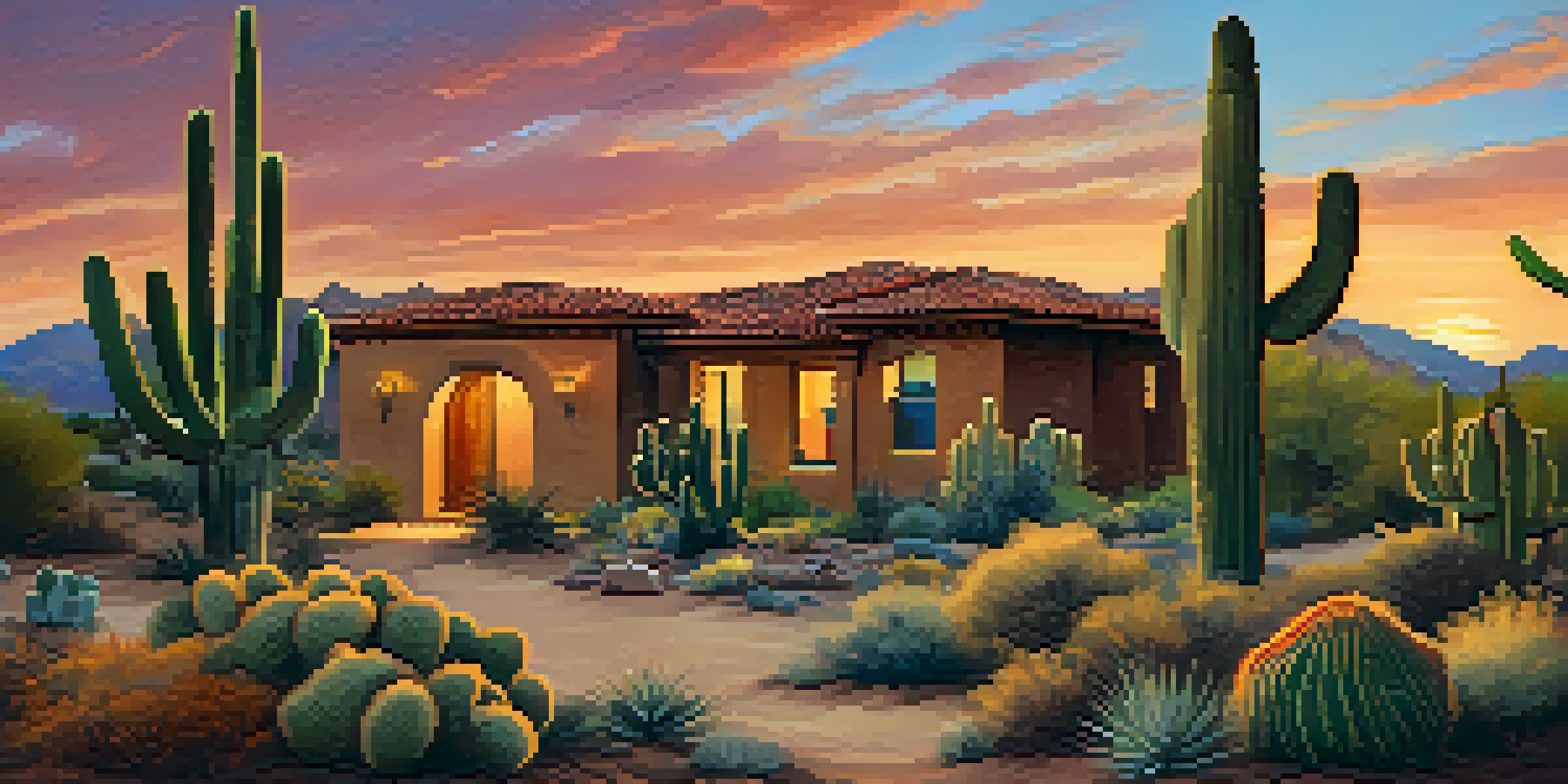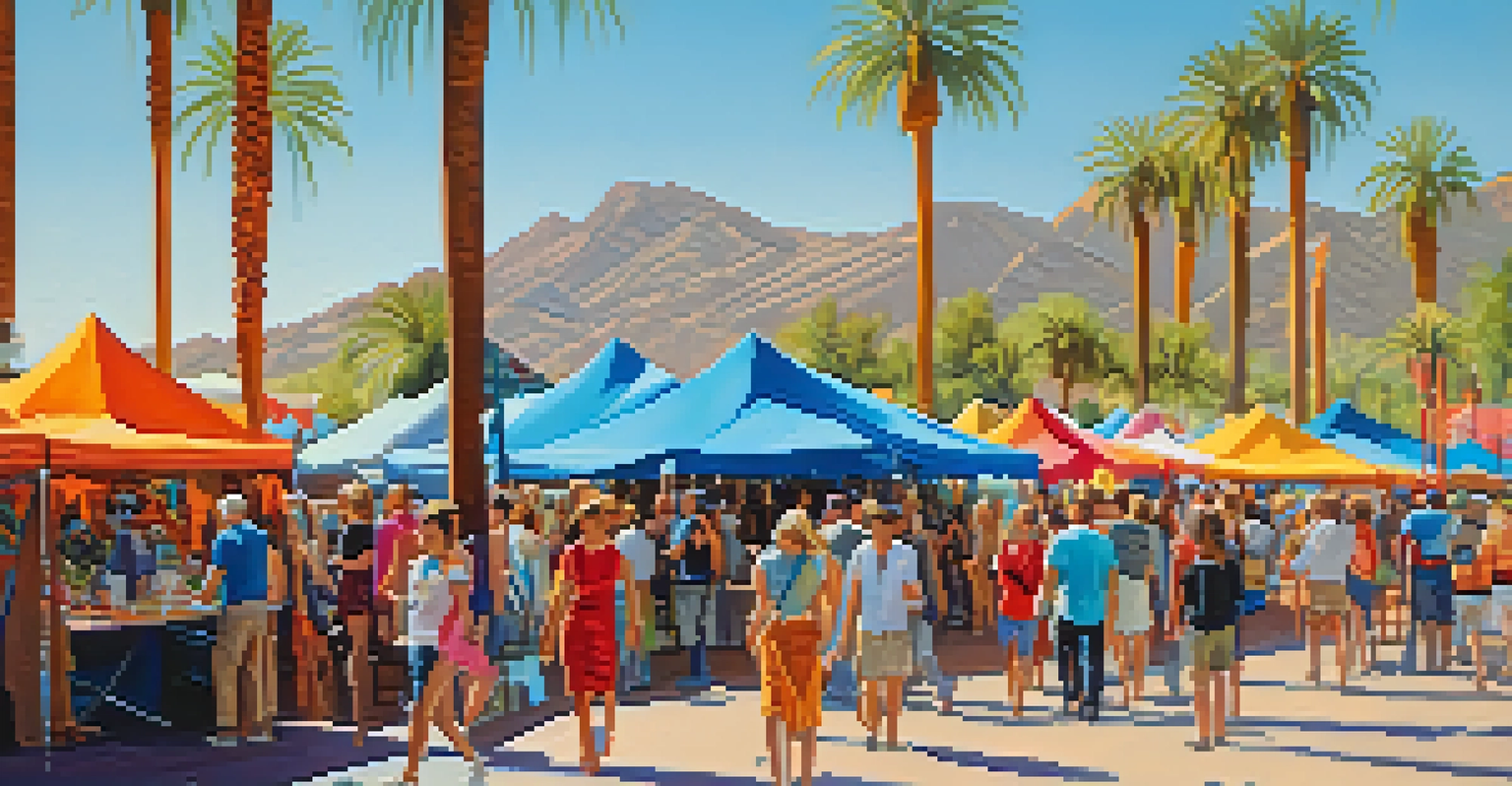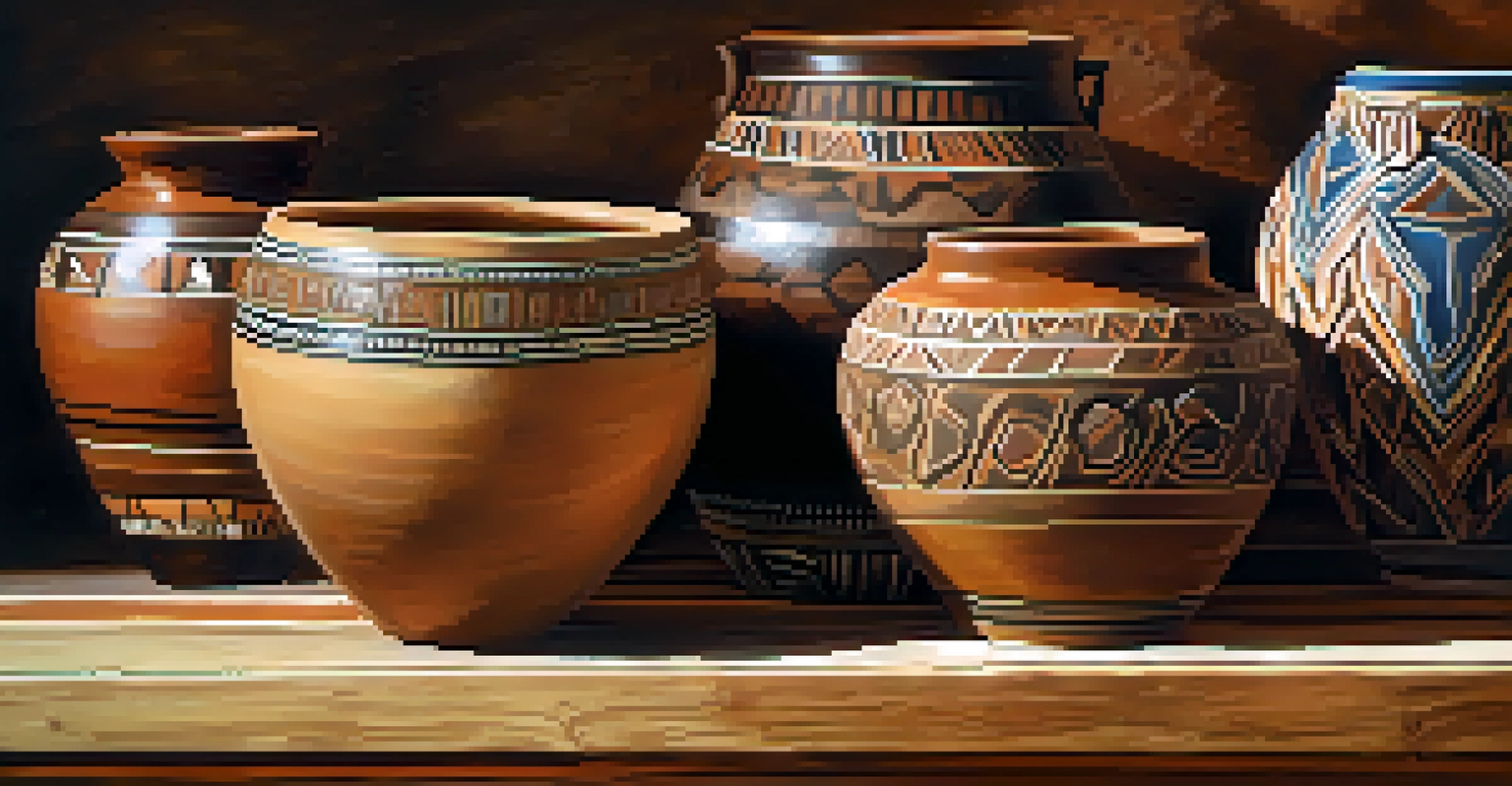Art and Architecture: Scottsdale's Historic Evolution

The Beginnings: Scottsdale's Early Influences
Scottsdale's journey began in the late 1800s, rooted in its agricultural landscape. Early settlers were drawn to the area for its fertile soil and natural beauty, which set the stage for the town's development. This initial focus on farming and ranching would soon evolve, influenced by the influx of artists and architects seeking inspiration from the stunning desert surroundings.
Art is not what you see, but what you make others see.
As the town began to grow, the architecture reflected the simplicity of its rural beginnings. Adobe-style homes and buildings captured the essence of Southwestern design, while also serving practical needs. These early structures not only provided shelter but also inspired a sense of community among the settlers.
This foundational period laid the groundwork for Scottsdale's unique character, merging the natural environment with human creativity. It was during these formative years that the seeds of art and architecture began to take root, leading to a rich tapestry that would later define the city.
The Art Scene Blossoms in the 20th Century
By the mid-1900s, Scottsdale had transformed into a vibrant hub for artists and art enthusiasts. The establishment of galleries and art shows attracted creatives from all over, fostering a culture of artistic expression. This burgeoning art scene not only enriched the community but also attracted tourists eager to experience Scottsdale's charm.

Architecture during this time began to reflect the influence of modern design principles. Buildings showcased clean lines and innovative materials, blending seamlessly with the natural landscape. Iconic structures like the Scottsdale Civic Center emerged, symbolizing the city's commitment to art and community engagement.
Scottsdale's Artistic Evolution
Scottsdale's transformation from an agricultural community to a vibrant artistic hub showcases the blend of natural beauty and creative expression.
As the art scene flourished, Scottsdale became known as 'The West's Most Western Town.' This nickname encapsulated its spirit, drawing in visitors and artists alike, eager to participate in its creative renaissance. The fusion of art and architecture began to define Scottsdale's identity, setting the stage for future developments.
Mid-Century Modernism Takes Center Stage
The 1950s and 60s marked a significant shift in Scottsdale's architectural landscape with the rise of mid-century modernism. Influenced by global design movements, architects began to prioritize functionality and integration with nature. This trend resulted in structures that featured expansive windows, open spaces, and innovative use of materials.
Architecture is the learned game, correct and magnificent, of forms assembled in the light.
One notable example is the iconic Hotel Valley Ho, which became a symbol of mid-century modern design. Its sleek lines and retro charm attracted celebrities and visitors, further solidifying Scottsdale's status as a stylish destination. This era not only reshaped the city's skyline but also contributed to its cultural narrative.
As Scottsdale embraced modernism, it also celebrated its artistic roots. Art installations and public sculptures began to emerge throughout the city, creating a dialogue between architecture and the visual arts. This synergy enhanced the overall aesthetic, making Scottsdale a canvas for creative exploration.
The Influence of Native American Heritage
Scottsdale's art and architecture are deeply intertwined with the region's Native American heritage. The rich traditions of the indigenous communities have significantly influenced the city's artistic expression. From pottery to textiles, these art forms reflect a profound connection to the land, culture, and history.
Architectural designs also pay homage to Native American roots, with many buildings incorporating traditional elements. The use of natural materials and organic shapes can often be traced back to indigenous practices. This blending of modern and traditional styles creates a unique narrative that honors the past while embracing the future.
Mid-Century Modernism's Impact
The rise of mid-century modernism in the 1950s and 60s reshaped Scottsdale's architectural landscape, emphasizing functionality and a connection to nature.
Additionally, cultural events and festivals celebrate this heritage, allowing residents and visitors to engage with Native American art and traditions. This ongoing dialogue enriches Scottsdale's cultural fabric, reminding us of the diverse influences that have shaped the city's evolution.
Revitalization and Contemporary Developments
In recent years, Scottsdale has undergone a revitalization that celebrates its historical roots while embracing contemporary design. New developments have emerged, showcasing innovative architecture that respects the environment and the city's heritage. Projects like the Scottsdale Waterfront blend modern aesthetics with public art, enhancing the urban landscape.
This revitalization extends to the downtown area, where historic buildings have been preserved and repurposed. The combination of new and old architecture tells a story of growth and adaptation, creating a vibrant atmosphere for residents and visitors alike. It’s a reminder that history is not just preserved but actively integrated into the present.
Moreover, Scottsdale's commitment to public art has flourished, with murals and sculptures adorning streets and parks. This focus on creativity fosters a sense of community and encourages artistic exploration, ensuring that Scottsdale remains a dynamic cultural destination.
Art Festivals: Celebrating Community and Culture
Art festivals have become a cornerstone of Scottsdale's cultural identity, celebrating the rich tapestry of local and national talent. Events like the Scottsdale Arts Festival and the Scottsdale ArtWalk draw thousands of visitors each year, fostering a sense of community and appreciation for the arts. These gatherings provide artists with a platform to showcase their work while engaging with the public.
At these festivals, the blend of art and architecture is on full display, as installations and performances often take place in iconic settings. The natural beauty of Scottsdale's surroundings enhances the experience, creating a harmonious backdrop for artistic expression. It's a space where creativity flourishes and connections are made.
Cultural Festivals Unite Community
Art festivals in Scottsdale celebrate local talent while fostering community engagement and appreciation for the arts, enhancing the city's cultural identity.
These celebrations not only highlight established artists but also nurture emerging talent. By fostering an inclusive environment, Scottsdale's art festivals contribute to the ongoing evolution of the city’s artistic landscape, ensuring that creativity remains at the heart of its community.
Looking Ahead: The Future of Scottsdale's Art and Architecture
As Scottsdale continues to grow, the future of its art and architecture promises to be as dynamic as its past. With a commitment to sustainability and innovation, upcoming projects aim to integrate green practices into architectural designs. This forward-thinking approach not only respects the environment but also sets a precedent for future developments.
Additionally, the city is focusing on enhancing public spaces to promote community engagement and artistic exploration. Initiatives that support local artists and incorporate public art will play a vital role in shaping the cultural landscape. By prioritizing collaboration and inclusivity, Scottsdale aims to foster an environment where creativity thrives.

Looking ahead, Scottsdale's art and architecture will undoubtedly evolve, reflecting the diverse voices and visions of its residents. This ongoing journey will continue to celebrate its rich history while embracing the future, ensuring that Scottsdale remains a vibrant hub of creativity and inspiration.